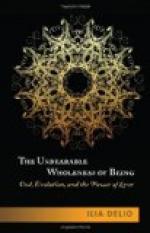We must assume that sexual intercourse was irregular and haphazard up to the dawn of history. Every woman—within the limits of her own tribe, probably—belonged to every man. Whether this assumption is universally applicable or not, must remain doubtful; later ethnologists, more particularly von Westermarck, deny it because it does not apply to every savage tribe of the present day. Herodotus tells us that promiscuity existed in historical times in countries as far removed from each other as Ethiopia and the borders of the Caspian Sea. There can be no reasonable doubt that sexual intercourse took the form of group-marriage, the exchange or lending of wives, and other similar arrangements.
The relationship between mother and child having been established by Nature herself, the first human family congregated round the mother, acknowledging her as its natural chief. This continued even after the causal connection between generation and birth had ceased to be a mystery. In all countries on the Mediterranean, more especially in Lycia, Crete and Egypt, the predominance of the female element in State and family is well attested; it is reflected in the natural religions of the Eastern races—both Semitic and Aryan—and we find innumerable traces of it in Greek mythology. The merit of discovering this important stage in the relationship of the sexes is due to Bachofen. “Based on life-giving motherhood,” he says, “gynecocracy was completely dominated by the natural principles and phenomena which rule its inner and outer life; it vividly realised the unity of nature, the harmony of the universe which it had not yet outgrown.... In every respect obedient to the laws of physical existence, its gaze was fixed upon the earth, it worshipped the chthonian powers rather than the gods of light.” The children of men who had sprung from their mother as the flowers spring from the soil, raised altars to Gaea, Demeter and Isis, the deities of inexhaustible fertility and abundance. These early races of men realised themselves only as a part of nature; they had not yet conceived the idea of rising above their condition and setting their intelligence to battle with its blind laws. Incapable of realising their individuality, they bowed in passive submission to nature’s undisputed sway. They were members of a tribe, and the fragmentary existence of the single




